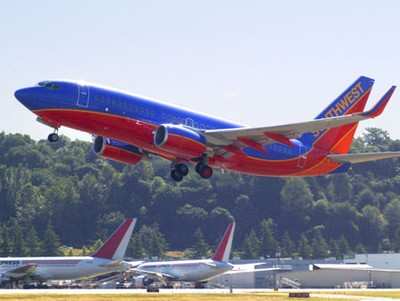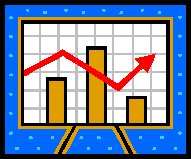Fuel Hedges Key To Dallas-Based LCC's Bottom Line
They've done it again. Helped by savings netted from its highly
successful fuel hedging policy, on Thursday Dallas-based Southwest
Airlines posted second quarter earnings of $321 million, nearly
setting an all-time record as most of its legacy competitors are
bleeding red ink.

"With the weak domestic economy and unprecedented jet fuel
prices, we are pleased to report our 69th consecutive quarter of
profitability," said Southwest CEO Gary Kelly (below). "Although we
have prepared ourselves well for today's challenging environment
and are proud of our ability to sustain profitability, we cannot
stand still. We must continue to make the necessary adjustments to
adapt to higher jet fuel prices and restore our profit
margins."
Parsing the numbers, Southwest earned $121 million, or 16 cents
per share, excluding special items but including profits from fuel
hedges. The carrier took in $2.87 billion in revenue, reports The
Dallas Morning News, compared to $278 million on $2.58 billion in
the second quarter of 2007.
Southwest's performance beat estimates from analysts, who had
predicted 12 cents per share of profit.

Once a novel experiment -- back in the days when fuel prices
were measured in tens of dollars per barrel of oil, not hundreds --
fuel hedging is now a vital part of Southwest's economic strategy,
and is its main differentiator from most of its competitors.
Though not immune from rising oil prices, Southwest has put
hedges in place that should result in significantly lower fuel
costs over the next several years than its rivals... unless oil
prices fall significantly, that is, which almost no one expects
will happen any time soon, if ever again.
 "The current market value of our fuel derivative contracts for
third quarter 2008 through 2012 is approximately $4.3 billion as a
result of the extraordinary increase in fuel prices this year,"
Kelly said.
"The current market value of our fuel derivative contracts for
third quarter 2008 through 2012 is approximately $4.3 billion as a
result of the extraordinary increase in fuel prices this year,"
Kelly said.
Kelly added Southwest will continue to raise its fares slightly,
to cope with rising costs... but it won't charge new add-on fees
for niceties like checked luggage.
"With new schedule planning tools and processes and fleet
flexibility, we believe we are well-positioned to respond to a
rapidly changing environment and have the flexibility to adjust our
flight schedule, as necessary, to eliminate unproductive flying,"
Kelly said.
"At present, we plan to grow our year-over-year available seat
mile (ASM) capacity no more than four percent in 2008 to primarily
meet Customer demand in developing markets, such as Denver... as a
consequence, we will grow to 115 daily departures to 32 markets in
November. We are evaluating our current fleet plans and may not
grow our ASM capacity in 2009."
Southwest's performance is by far the best among carriers that
have reported Q2 numbers so far... but it's not the only airline to
announce a second-quarter profit, helped by fuel hedging.
Alaska Airlines also announced a quarterly profit, of $63.1
million. That works out to $1.74 per share... but without special
items like hedging, Alaska lost $14.1 million.
 ANN's Daily Aero-Linx (05.02.24)
ANN's Daily Aero-Linx (05.02.24) ANN's Daily Aero-Term (05.02.24): Touchdown Zone Lighting
ANN's Daily Aero-Term (05.02.24): Touchdown Zone Lighting Aero-News: Quote of the Day (05.02.24)
Aero-News: Quote of the Day (05.02.24) ANN FAQ: Contributing To Aero-TV
ANN FAQ: Contributing To Aero-TV NTSB Final Report: Cirrus Design Corp SR20
NTSB Final Report: Cirrus Design Corp SR20





